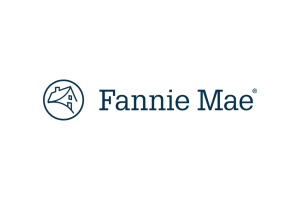
The financial industry is being completely transformed by open banking. This concept enables customers to share their financial data with authorized third parties. It allows them to do so in a secure way. This promotes competition and innovation in corporate and personal finance. This article explores the major areas of Open Banking and how far its effects can go.
Open Banking: What Is It?
Open banking is a system that enables consumers to share their financial data with third-party financial service providers through secure Application Programming Interfaces (APIs). Users control this sharing of data; hence privacy and security are ensured. Open banking allows customers to break down data silos, which gives them greater autonomy over their financial lives while creating many opportunities for firms to come up with innovative products and services. Such a democratization of finance has the potential to ensure that the market becomes more competitive as well as customer-focused. In summary, Open Banking aims at developing a more honest, effective, and consumer-driven financial system.
Enabling Consumer Empowerment
Open banking is about increasing the potential for people to take control of their finances. This allows individuals to have an idea of their daily expenditures by accessing personal data, which gives them options on how they can start saving in coming days. Besides benefiting from personalized advice in relation to finance or tailor-made products, they also have an added advantage in that fraud control measures are improved. By fostering competition among financial institutions, lower costs are driven, and customer service is enhanced, thus leaving people in control of their finances. There will be less secrecy in the relationship between banks and their clients, as evidenced by this shift of power, which will lead to a better-informed public about options for accessing funds.
Advancing Financial Innovations
Open Banking helps foster industry innovation. This allows creation of new disruptive digitalized versions of financing through leveraging on rich data streams. For example, fintech firms are now exploring the ways in which they can use open banking like budgeting tools, PFM platforms and lending services. In many cases these are a more convenient, flexible and less expensive alternatives to traditional banks. Consequently, consumers enjoy a wide range of financial products and services that they can select from as per their specific requirements and preferences. The heightened competition and increased creativity are propelling the financial sector towards enhanced customer satisfaction.
Perfecting Enterprise Prospects
Open Banking opens doors for various types of businesses in different sectors. Banks can use Open Banking to strengthen customer relations, evaluate risks better, and create new sources of income. Sellers could provide personalized payment options as well as loyalty programs. Insurers will create personalized products aligned with customers’ behavior patterns. There is much potential here for those who want it: embracing open banking will give an edge over competitors’ market positions to those who do so. Companies may derive greater value from clients by using insights derived from their client data, leading to stronger relationships with them. Businesses may therefore become more customer-oriented in this era of Open Banking if they so wish while trying to keep up with the high speed at which the market changes.
Data Security and Privacy
The basic part of Open Banking is data security and privacy. Such measures must be well-established to keep sensitive financial information private. The General Data Protection Regulation (GDPR) and the California Consumer Privacy Act (CCPA) are some of the rules that have been put in place to protect data. Besides, consumers determine which information they want to share with others while ensuring accountability. The trustworthiness of Open Banking is important for its success among consumers. Therefore, it is necessary to pay due consideration to overall data security within the Open Banking system for the purposes of maintaining public assurance.
Challenges and Opportunities
However, Open Banking has its own set of challenges too; new technology systems can be difficult and costly to integrate into financial institutions. It’s important that people learn how to trust their computer systems because this fear over who is looking at what on your computer will always be there until one knows they can trust their computer completely. Moreover, the regulatory compliance landscape keeps changing, hence it requires businesses’ vigilance and acclimatization. Despite these constraints, the long-term gains from open banking are huge, and early entrants have a good chance of benefiting from them. Financial institutions, fintech companies, and regulators need to team up to conquer these hurdles for Open Banking.
The Future of Finance
Open Banking is revolutionizing finance at a rapid pace never seen before in history. As advances in technology continue unabatedly while consumers’ demands change unceasingly, there will most probably be additional developments in more innovative customer-focused financial services. By fostering competition among banks, allowing consumer influence on product development processes, leveraging technologies including APIs to facilitate open access, allowing non-banks like telcos or retailers to enter the financing industry along with fintech startups with little regulation, among several others, open banking opens the road towards developing a more inclusive and efficient financial ecosystem. The future of finance will be characterized by more personalization, easier interactions, and better financial health for individuals. Open Banking can democratize the use of financial services, making it available for both individuals and companies.
Collaboration and Partnerships
Full realization of Open Banking needs collective efforts from financial institutions, fintech’s, as well as regulators. Collaboration among involved stakeholders is a key ingredient to set up standards, address security matters, or level the competition field. Moreover, partnerships may become an avenue for new products and services that are beneficial to all parties involved. Therefore, there must be a general company-wide commitment to this issue where staff training is provided on what might cause data breaches. Overcoming these challenges requires a collaborative effort between financial institutions, fintech companies, and regulators. Robust partnerships can facilitate innovation adoption; hence Open Banking works for everyone involved in it, right from its developers to its users.
Consumer Education
Financial education is important for consumers to be able to benefit fully from Open Banking. Data sharing and security significance must be known by consumers in order to choose correctly whom from third-party suppliers they can trust. Financial institutions and regulators have a role in providing clear and accessible information to consumers. By gaining financial literacy, consumers will maximize on Open Banking while protecting against potential risks. Investment into consumer education will help build trust and confidence in Open Banking ecosystems.
Regulatory Framework
The successful implementation of Open Banking requires a clear regulatory framework that supports its adoption. Regulations should balance consumer protection with innovation promotion objectives. Regulators can drive investment and competition in the industry by offering a predictable environment, which fosters stability. A well-designed regulatory framework can foster an environment where open banking thrives as it benefits businesses and customers alike. Striking the right balance between regulation and innovation is important for the long-term success of Open Banking.
Global Adoption
The popularity of open banking has grown worldwide. The more nations embrace open banking principles, the greater the possibilities for cross-border financial services. This will create new opportunities for businesses and consumers while promoting financial inclusion. The global open banking ecosystem can contribute to economic growth and stability within the financial markets. By fostering international cooperation and harmonization of regulations, the global adoption of Open Banking could accelerate.
In conclusion, open banking is a powerful force that is reshaping the financial industry. It is changing customers’ lives by empowering them, leading to the creation of new innovative business ideas. Through global trend analysis of different sectors such as conferences, consultations, surveys, stakeholder discussions, among other methods, it is tasked with enlightening those charged with making decisions on what shape it should take, including both business leaders as well as policymakers. Businesses, consumers, and regulators have to work together as the market continues to shape into something new, unlocking the full potential of Open Banking. The journey towards a truly open financial future has just begun, and its impact will be felt for years to come.







